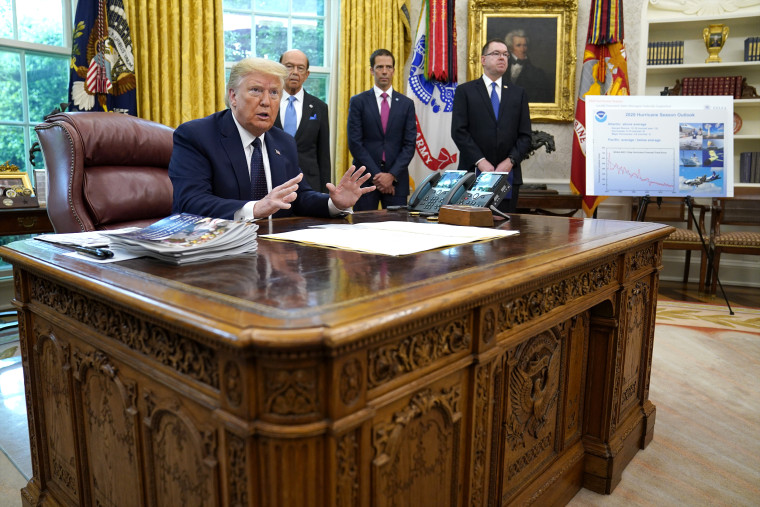An Associated Press report over the weekend summarized the kind of conditions Americans are unaccustomed to confronting.
Over 48 hours in America, the official death toll from the coronavirus pandemic topped 100,000, the number of people who filed for unemployment during the crisis soared past 40 million, and protests erupted in major cities after the death of George Floyd. It's the kind of frenetic, fractured moment when national leaders are looked to for solutions and solace.
The United States has experienced countless challenges and crises, testing leaders, their mettle, and their capacity to at least try to help guide the nation through painful times. But it's difficult to find a modern historical parallel for the scale of the disconnect between the times and the chief executive responsible for helping steer the country.
As last week unfolded, the pandemic death toll grew, the economic crisis worsened, and tensions over racial injustices intensified. Meanwhile, at the White House, Donald Trump had three main areas of focus: accusing an MSNBC host of murder, lying about a voting method he and his team rely on, and targeting a social-media platform that took modest steps to address his misinformation campaign.
It appeared that the president was prepared to respond to crisis conditions in his own country through a combination of indifference and neglect.
What soon followed was a presidential posture that made indifference and neglect look far preferable.
It was on Friday morning when Trump suggested the federal government was prepared to "assume control" over unrest in Minneapolis, adding, "[W]hen the looting starts, the shooting starts." It's a phrase with a painful and ugly history, which gave the impression that the president was prepared to endorse state-sanctioned violence against civilian protestors on American streets.
Over the weekend, he kept the offensive going. The Republican taunted protestors. And threatened to unleash "vicious dogs" and "ominous weapons." And condemned journalists, many of whom have risked their wellbeing covering the unrest, as the "enemy of the people." And publicly thanked himself for National Guard deployments he had nothing to do with. And invited his followers to launch some kind of counterdemonstration against those protesting against racial injustices. And seemed a little too eager to deploy the U.S. military into American cities. And pressed mayors to act like military generals.
At no point did Trump call for calm. At no point did he express a willingness to listen. Instead, the president largely hid and tweeted.
Rep. Emanuel Cleaver (D-Mo.) told the AP, "President Trump was not built for times like this."
At various points in his presidency, Trump has been asked about what, if anything, he could do to help bring Americans together. In every instance, he acted as if he didn't understand the question.
On the 75th anniversary of D-Day, for example, Trump sat down with Fox News' Laura Ingraham in Normandy and the host asked, "What could you do to unite the country at a time of great polarization?" The president responded by whining for quite a while about Democratic leaders in Congress, including Senate Minority Leader Chuck Schumer (D-N.Y.), whom he called "a total political, you know, jerk."
In July 2018, Trump sat down with Fox Business' Maria Bartiromo, who asked, "As the Commander in Chief, as the president of this great country, what can you do to bring us together?" He responded by celebrating his rabid Republican base as "incredible," while condemning his critics as "dangerous."
Two months later, in September 2018, Trump spoke to a television station in Montana and was asked about how best to bridge the divide among Americans. The president responded that Democrats are "making fools out of themselves" by opposing him.
In other words, when asked about efforts to unify, Trump instinctively divides. Even divisive leaders generally try to keep up appearances, and answer questions about bringing people together with vague platitudes about shared principles, but the current U.S. leader hasn't bothered with the pretense: the president has no intention of bridging divides or healing wounds, and he doesn't see the point of pretending otherwise.
Maybe the president sees political value on stoking the fires of division, confident that if he tears the country apart, he'll be left with the biggest chunk. Maybe there is no strategy and he pits people against one another because it comes naturally.
Either way, as their nation descends deeper into multiple ongoing crises, Americans are witnessing a staggering gap between the kind of leadership they need and the kind of leadership they have.

